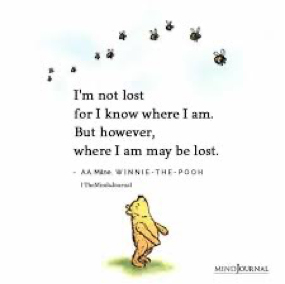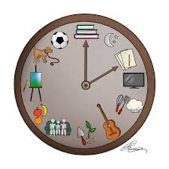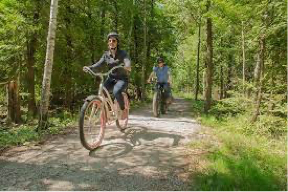Children today deal with more anxiety than we did. According to the National Institutes of Health, nearly one in three of all adolescents ages thirteen to eighteen will experience an anxiety disorder.

I retired from teaching two years ago. I spent my new free time traveling, gardening, reading, sewing, and writing. My retirement routine included meeting a friend in the morning after she finished her bus route, and we walked for an hour. I also folded into my days a twice-a-week session of yoga. My new life burgeoned with self-care habits and outlets for my creativity. I loved it.
Then friends from my old high school called. A math teacher received a promotion three days before school started on August 18. Would I please, please, please fill in for them until they found a replacement?
I agreed to sub for three weeks. My new classroom was one door down from where I’d spent the last nine years of my teaching career. I truly enjoyed seeing my co-worker friends each day, and I slowly picked up my old routines. One morning, after dropping in on my department chair, who used to be my next-door neighbor, I returned to my room, studying the assignment I’d picked up from him. I walked straight into Mr. Johnson’s class (my old room), interrupting his Algebra 2 lesson, without even realizing what I’d done. Muscle memory. Old routines die hard.

We are creatures of habit. So are our children. The past eighteen months have wreaked havoc on many of them as Covid pulverized their daily routines. No more in-person school. No more recess with friends. Relationships with teachers were more distant and viewed through a screen. “Asynchronous learning” was our quick response to quarantining, but it left something to be desired for the kids. They needed the social aspect of sitting in a school building five days a week.
Children today deal with more anxiety than we did. According to the National Institutes of Health, nearly one in three of all adolescents ages thirteen to eighteen will experience an anxiety disorder. These numbers have been rising steadily; between 2007 and 2012, anxiety disorders in children and teens went up 20%. Between the fears of school shootings, threats of climate change disasters, and the constant pressure to be perfect posed by social media platforms, our kids struggle. Parents watch helplessly as their children suffer from depression, panic attacks, and even suicidal thoughts.

Adults across the nation breathed a sigh of relief as the first day of classes loomed closer on the horizon. Finally. Life could return to normalcy. We could put the past year and a half behind us and be happy again. Unfortunately, for some of our kiddos, that sense of familiarity has been slow to return. They are out of practice with social interactions and are full of uncertainty.
I dealt with this new normal in my three weeks of subbing. Students found it extremely difficult to focus and were unwilling to work, especially if the task required sustained thought. I asked multiple times, “What if you’re wrong (with the answer to this problem)? What is the worst thing to happen? If your answer is incorrect, we’ll fix it together. Try!” They were afraid to take a risk, even one as small as missing the answer to three times twelve.
How can we, as teachers and parents, help our children navigate this new minefield? Have your kids ever given you more than a monosyllabic answer to “How was your day?” They’re even less likely to spill their guts now. We can’t simply ask, “Are you anxious? Any depressed feelings today?” Instead, observe their behaviors and ask a lot of open-ended questions, things that don’t have the answers “Yes,” or “No,” or “Fine.” Open the lines of communication and really listen.
Many kids get sucked into a spiral of anxiety wondering about all the “what ifs” that could happen. If your child frets about imagined fears of being teased, or eating lunch alone, or not knowing anyone in their biology class, help them plan a path through the possible scenario. Ask questions like, “What will you do if this happens?” Help them discover proactive steps to ease them through their scary problem. Helping them walk into a situation feeling prepared will ease much of their concern. Dr. Muyina Khanna, a clinical psychologist, suggests this: “Whenever we work with kids with any kind of anxiety, we're trying to help them identify the thing that they've been avoiding and then try to move them slowly towards getting more and more comfortable doing those things.”
While the temptation to heave a sigh of relief and jump back into our old routines certainly exudes a powerful pull, parents and teachers should be aware many kids can’t pretend everything is fine simply because they are sitting with their friends in a classroom again. Khanna says affirming kids’ emotions is one of the best things we can do to help them cope. Instead of scolding them for their uncertainty or worry, say things like, “I understand how you feel. Things will continue to improve. Let’s talk about what you can do tomorrow if this happens again.” And the more predictability we can engineer into their lives, the more they will settle and unearth the coping skills that rusted from disuse. Building routines may not come as easily as they have in the past, so patience and consistency is key.

Parents may also want to resist the urge to leap straight back into all the various activities they’ve scheduled for their children in the past. Maybe instead of soccer practice three evenings a week, and piano lessons on Tuesday, and Girl Scout meetings once a month, they can discuss with their child which activity she wants to resume the most. Start slowly. Leave a lot of free time for winding down, and let your kid de-stress. Plan family outings that involve the outdoors. Take a hike. Ride bikes together. Make a scavenger hunt of things to find in nature.

Covid may be with us forever in some form or fashion. Hopefully, the past eighteen months have taught us how to live in our new normal. As we slowly put our lives back on track, we emerge different, but strong. We can help our children find their way back.


